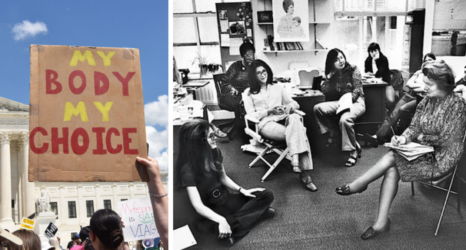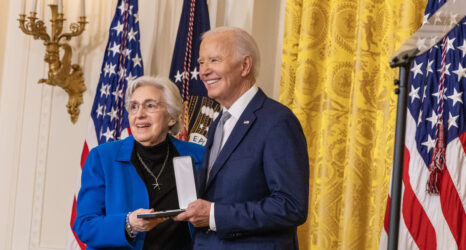Twenty-five years ago, on May 3, 1990, I stood with my classmates on the grassy meadow we walked through every day to get to class, waiting to hear the fate of our college. I was a freshman. Many of us were weary from the late-night meetings, phone calls and final attempts to persuade board members to vote to keep Mills College in Oakland, California, a women-only school.
We were now face to face with those board members and the college president, standing above us on a makeshift platform. The head of the board stepped towards the microphone, paused, and announced that the oldest women’s college west of the Mississippi was going coed starting in the fall of 1991. Shock, anger, disappointment spread among the students, faculty, and alumnae standing alongside me. People screamed out, cried from the shock and from what many felt was a betrayal. Crying turned to loud, steady shouts of “We will not accept this.” Most memorable to me was what followed: the crowd chanting “Strike! Strike! Strike!”
Hours later, we were standing in the student union. You could feel the energy and determination in the large room, tables and chairs pushed to the side to make room for all of us. The undergraduate school had an enrollment of less than 800 students, yet the room was filled with hundreds of people ready for action. It became the unofficial strike headquarters. Looking at my classmates’ faces, I could see feelings of defeat redirected into purpose. Later that night, it was unanimously decided: We were going to strike! We planned to surround all the buildings on campus and block entry. We went to gather sleeping bags, comforters, anything we could find so we could sleep outside the buildings.
After the sun rose and people started arriving on campus, we were ready. When faculty and administration walked towards us, we stood up and linked arms, blocking access. They had no other choice but to turn away. We were prepared to be arrested. The Oakland police showed up, but I don’t think they knew what to do with us. And how would they arrest and transport hundreds of young women?
The strike was established.
We split up into groups and different roles. Each group served an important purpose—planning strike strategies, staging protests, marches and rallies, making signs, designing T-shirts, getting food to people on the strike-lines, making sure the buildings were blocked, calling alumnae. Each group worked hand-in-hand. Long before we heard “It takes a village,” we were that village.
I had already starting working in TV and radio. I worked for NPR covering the 1989 Loma Prieto earthquake and its aftermath, so I became part of what we called the “press group.” I called producers at NPR and within the hour I was being interviewed on-air; the strike was now national news on the radio. Friends cheered and hugged as we heard the story live, from one of buildings we had occupied.
We continued to barricade the buildings, taking shifts. We staged rallies, marches and protests. Students led crowds with rousing speeches. Alumnae came to campus to help and raised money in phone-call drives; friends and relatives joined in the effort. We boycotted most classes; many of the professors understood and worked with us. The school that had taught us to have a voice, to lead as women and to work hard for what we wanted was seeing those principles in action.
The strike was a good example of how women work together, not the false stereotypes of “cat-fighting” that we often hear and now see on reality shows. Many of us were teenagers or under the age of 22, all prepared to be arrested for our protesting. We had a lot on the line—risking incomplete grades, needing credits to graduate, yet the strike went forward. Late at night, with a box of half-eaten pizza, a dry-erase board filled with things to do, we were there for each other with pep talks, hugs, and reminders that we could do this together. I learned as much from the strong and determined women around me, as I did in my classes.
Women’s colleges from all over the country called and sent us letters and posters filled with words of solidarity and encouragement. We hung them in our make-shift offices and on walls lining the campus. Our community had extended to our sister schools.
We made headlines all over the world, from The New York Times to the International Herald Tribune. Barely 19, I met the NBC News producer and satellite truck at 2 a.m. to go live on Today Show. Talk-show host Phil Donahue was running from audience member to Mills panelist on his New York set, holding his microphone out for people, trying to keep up with the debate we had created. I later achieved my goal as member of the press group—to book us and get the topic discussed on Nightline.
The press was there the day the board made their second announcement a little over two weeks later, on May 18. The head of the board unrolled a large, white banner that said, “Mills. For Women. Again.” I can still hear and feel the shouts and screams from the crowd standing at the steps of the student union. As corks popped on champagne bottles, arms raised in the air, students gleefully chanting “We did it.”
Mills has remained all-women ever since. No other school has ever reversed a board’s coed decision. It remains a shining example of how well women can work together to achieve a seemingly impossible goal and make history. I went to Mills an only child, and left with more sisters than I ever could have imagined.
Photo from decision day at Mills College by Peg Skorpinski. Courtesy Mills College.





